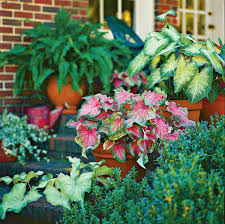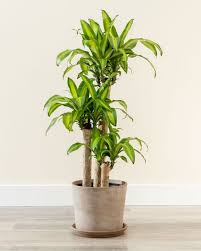:strip_icc():format(webp)/cat-safe-houseplants-nontoxic-indoor-plants-ab36921de56d46b99ce3899ea63a5421.jpg)
If you have pets and love houseplants, you know the struggle. One day, you notice fang-shaped holes in one of your plant’s leaves—or even catch Fluffy in the act of chomping down on one of your prize specimens—and go into panic mode. Could your beloved plant have poisoned your beloved pet?
Luckily, you don’t have to choose between your plant collection and your fur kids, because some of the prettiest, most easygoing houseplants are also non-toxic to cats. From polka dot plants to staghorn ferns, this list of 12 cat-friendly houseplants will enliven your space with color and texture—without sacrificing your kitty’s health.
Meet the Expert
Alexandra Jones is a certified Master Gardener based in Philadelphia. After graduating from the University of Michigan, she embarked on a career in writing and gardening, with a focus on urban farming. She earned her Master Gardener certification in 2019.
Decorate with these plants in the cat-accessible areas of your home, and the next time your feline takes a bite out of your favorite plant friend, you can breathe a sigh of relief and skip the scary (and expensive) emergency vet visit.
01of 12
Polka Dot Plant
:strip_icc():format(webp)/polka-dot-plant-ca3999eef0ac4ef4a10ecd4dc026a73c.jpg)
BENOITBRUCHEZ / GETTY IMAGES
- Botanical Name: Hypoestes phyllostachya
- Sun Exposure: Bright, indirect light
- Soil Type: Rich, well-draining soil mix
- Soil pH: 5.6 – 6.5
Cute and compact, the polka dot plant, also called freckle face plant, makes a cheery addition to any bookshelf, side table, home office, or windowsill. Its bright colors—pink, white, red, or lavender splotches on green leaves—will show best in bright, indirect light.
If your polka dot plant is looking tall and leggy, consider it a sign that light conditions are too dark. Move the plant a little closer to your light source, then pinch it back to a set of two leaves to create a more compact, rounded shape.
02of 12
Boston Fern
:strip_icc():format(webp)/story-planter-scaled-a94e1b68214d4922b4ff6056722739c3.jpg)
ANNE SAGE
- Botanical Name: Nephrolepis exaltata
- Sun Exposure: Bright, indirect light
- Soil Type: Rich, well-draining soil mix (kept moist)
- Soil pH: 5.0 – 5.5
There’s nothing quite like the striking presence of a lush Boston fern to add an elegant touch to a room. As a bonus, these ferns are easy to care for, requiring warm temps and bright, indirect light. They’re nontoxic to cats, but if you really want to make sure prying paws don’t come into contact with your plant, simply pot it in a hanging basket and suspend it from your ceiling. That way, it’ll be out of reach of even the most acrobatic kitties.
03of 12
Prayer Plant
:strip_icc():format(webp)/simple-winter-styling-ideas-for-entryway-f1e3534ccda24b51bfed6ac2a795466a.jpg)
CASA WATKINS LIVING
- Botanical Name: Maranta leuconeura
- Sun Exposure: Bright, indirect light
- Soil Type: Well-draining soil mix
- Soil pH: 5.5 – 6.0
These specimens in the genus Marantaceae—which encompasses both Marantas and Calatheas—are known by this common name, thanks to their habit of turning up their colorfully patterned leaves like praying hands at night. Because they love humidity, they make a great bathroom plant—but any warm place with bright, indirect light works well as long as it’s not too dry.
:strip_icc():format(webp)/ezgif-4-457e80b26d8d-9c38cc4330064daa9593785357727769.jpg)
Bloomscape Red Prayer Plant $35.00
SHOP
04of 12
Rabbit’s Foot Fern
:strip_icc():format(webp)/rabbits-foot-fern-d42c307c77d74d909112a9cd42286022.jpg)
@LOST_IN_THEJUNGLE
- Botanical Name: Phlebodium aureum / Polypodium aureum
- Sun Exposure: Bright, indirect light
- Soil Type: Well-draining, peat moss-based soil mix
- Soil pH: 6.6 – 7.5
Known for the fuzzy, paw-like rhizomes that grow out of the pot below its feathery fronds, the rabbit’s foot fern is an epiphytic jungle plant that, in the wild, grows on rocks or another plant-like in a nook of a tree trunk or branch. Like orchids, air plants, and bromeliads, the rabbit’s fern is an epiphyte that doesn’t need soil to thrive; it gets the nutrients and water it needs from its habitat. Still, you can plant the fern in a porous potting mix as long as it’s provided with consistent moisture (without having “wet feet”).
The rabbit foot fern’s relatives in the Davallia genus, the deer’s foot fern and the squirrel’s foot fern, are also non-toxic to cats.
If grown epiphytically instead of terrestrially, a rabbit’s foot fern will seek out its nutrients and water from its surroundings. Be sure to regularly mist its leaves, or place a shallow tray with a layer of pebbles under the plant. As the water evaporates, it will add moisture to the air around your plant.
Parlor Palm
:strip_icc():format(webp)/ezgif-7-1d3e378aa22b-141956f3257c4c8ea9df10d4253c777d.jpg)
ALVIN WAYNE
- Botanical Name: Chamaedorea elegans
- Sun Exposure: Low to bright, indirect light
- Soil Type: Well-draining, peat moss-based soil mix
- Soil pH: 5.1 – 7.5
Large floor plants are so much fun to decorate with—they make a big statement, look beautiful, and fill empty space with gorgeous green. But having foliage so close to the ground makes them an easy target for our pets. Luckily, the parlor palm has it all: it’s cat-safe, beautiful, and easy to care for.
Staghorn Fern
:strip_icc():format(webp)/staghorn-fern-mounted-8bf39e8f399e4baea17d6bfb5bc985a6.jpg)
ALLISON CHERRY/GETTY IMAGES
- Botanical Name: Platycerium bifurcatum
- Sun Exposure: Bright, indirect light
- Soil Type: n/a (epiphytic)
- Soil pH: n/a (epiphytic)
Worried your rascally cats are going to chomp your plants, even if you display them on a high shelf? Pick up a staghorn fern. In addition to being nontoxic to kitties, its classic presentation—mounted on a wooden plaque and displayed on a wall—puts it far out of reach of pets. And if you do decide to pot your epiphytic staghorn fern using sphagnum moss or a loose, fast-draining potting mix for a more traditional presentation, you can rest easy that a cat who takes a bite will be just fine.
:strip_icc():format(webp)/il_1588xN.2775595945_80b3-739168259c6544f7ba4506c2b78fe029.jpg)
Hirts Gardens Staghorn Fern $18.00
SHOP
07of 12
Purple Passion Plant
:strip_icc():format(webp)/purple-passion-plant-b967032914ad4d5b91eee34f74344d08.jpg)
FRANCISCO HERRERA/GETTY IMAGES
- Botanical Name: Gynura aurantiaca
- Sun Exposure: Bright, indirect light (some direct light is OK)
- Soil Type: Well-draining soil mix (kept moist)
- Soil pH: 6.5 – 7.5
This unique, compact houseplant, also called purple velvet plant, is named for the vivid violet fuzz that grows on its dark green leaves. It’s the perfect plant to add a pop of color to a section of succulents or an indoor herb garden. Choose an area with plenty of sun for this specimen, since its colors will show best with lots of light. However, it’s best to limit the amount of direct sunlight to a few hours per day.
Burro’s Tail
:strip_icc():format(webp)/burros-tail-plant-window-b48cd088f1c546b5b78970c08e782d93.jpg)
FOTTODK/GETTY IMAGES
- Botanical Name: Sedum morganianum
- Sun Exposure: Bright, indirect light (some direct light is OK)
- Soil Type: Sandy, well-draining soil mix
- Soil pH: 6.0
Although this charming trailing succulent is nontoxic, what’s an easy way to keep it safe from your inquisitive cats? Hang it from your ceiling or on the edge of a high shelf in a bright, sunny spot. Bright light will encourage the growth of its long, ropelike stems into a beautiful hanging plant your cats can’t touch.
Be careful when moving your burro’s tail or taking it down from its perch for watering, as its tiny leaves are delicate and can easily fall off.
09of 12
Spider Plant
:strip_icc():format(webp)/radiant-6-67816d10c45a4e21b9076e3d1e45e79b.jpg)
ANNE SAGE
- Botanical Name: Chlorophytum comosum
- Sun Exposure: Bright, indirect light
- Soil Type: Well-draining potting mix
- Soil pH: 6.0 – 7.2
This beloved houseplant shows up in living rooms, offices, and public spaces just about everywhere you go. And it’s no wonder: The spider plant (also known as an airplane plant) is beautiful, with its variegated and elegantly draping leaves, and it’s incredibly hardy even when neglected for long periods. And, as a bonus, it’s nontoxic to cats—so there’s no need to panic if you do happen to find little bite marks in its leaves.
African Violet
:strip_icc():format(webp)/african-violet-houseplants-safe-pets-cats-dogs-428f96cd0bb14ce0b4ba7ef85a719d45.jpg)
MINT IMAGES/HELEN NORMAN/GETTY IMAGES
- Botanical Name: Saintpaulia ionantha / Streptocarpus ionanthus
- Sun Exposure: Bright, indirect light
- Soil Type: Loose, porous, well-draining soil mix
- Soil pH: 5.8 – 6.2
African Violets are known for their bright, cheerful blooms, which range from purple to pink to red to white to even variegated types. In the right conditions—lots of humidity and bright, indirect light, such as from a north-facing or east-facing window—flowers will appear several times a year. Whether you choose to water yours from the top or bottom, be sure to avoid getting the leaves wet and use tepid water, as cold water will leave unsightly marks on the leaves.
Ponytail Palm
:strip_icc():format(webp)/diningroomoasis15-4e0f7494a3d24481a16c26cbdfc793f8.jpeg)
BLACK AND BLOOMS
- Botanical Name: Beaucarnea recurvata
- Sun Exposure: Bright, indirect light to full sun
- Soil Type: Sandy, well-draining soil mix
- Soil pH: 6.5 – 7.5
What could be cuter than this funky, playful palm? Unlike its larger cousins, the ponytail palm (also known as elephant’s foot palm due to its wide gray trunk) is ideal to display on shelves, counters, and side tables, thanks to its slow growth habit and compact size. Set them in a place with lots of bright, indirect light and allow the soil to dry out completely between waterings. Luckily, curious cats won’t run into trouble if they nibble a leaf now and then.
Hen and Chicks
:strip_icc():format(webp)/hen-and-chicks-sempervivum-cat-safe-houseplants-nontoxic-e6a64828520b47fbb07c923d61da0292.jpg)
INNA REZNIK/GETTY IMAGES
- Botanical Name: Echeveria elegans
- Sun Exposure: Bright, indirect light to full sun
- Soil Type: Sandy, well-draining soil mix
- Soil pH: 6.6 – 7.5
Also known as sempervivum, the hen and chicks plant is one of the easiest succulents to grow. (They’re also great for homes with cats because they’re quite compact and don’t trail or dangle.) Each healthy mother plant will grow new rosettes—called offsets or pups—which can fill out a pot beautifully. Or, if you’d prefer, you can simply cut or pull off the rosettes and plant them in fresh succulent soil to grow a new plant.
:strip_icc():format(webp)/hen-and-chicks-thesill-72538246725c443f9b5ff0befe890893.jpeg)
The Sill Summer Succulent $45.00


